Uso declarado de estrategias y su variación según el nivel de competencia en aprendientes universitarios de inglés como lengua extranjera
Palabras clave:
Inventario de Estrategias para el Aprendizaje de una Lengua, estrategias de aprendizaje, Oxford Placement Test, competencia en inglés, lengua inglesaResumen
Este artículo presenta un estudio orientado a investigar el uso percibido de estrategias de aprendizaje de una lengua entre aprendientes universitarios de inglés como lengua extranjera y la variación de este uso en función del nivel de competencia en esta lengua. Como herramienta de obtención de datos se empleó el Strategy Inventory for Language Learning (en español, el Inventario de Estrategias para el Aprendizaje de una Lengua) (Oxford, 1990). El nivel de competencia de los participantes, por su parte, se midió a través del Oxford Placement Test (Allan, 2004). Los datos fueron sometidos a análisis estadístico de tipo descriptivo (media, moda, desviación estándar, frecuencia y porcentaje) e inferencial (ANOVA seguido de la prueba post hoc de Scheffé). Los resultados indican que los participantes, en su conjunto, se declaran usuarios de estrategias de un nivel intermedio, siendo las estrategias afectivas las que manifiestan emplear con mayor asiduidad, seguidas por las estrategias de compensación y las de naturaleza metacognitiva. En cuanto a la variación en el uso percibido de estrategias derivada del nivel de competencia en inglés, el estudio concluye que cuanto más elevado es el nivel de competencia, más frecuente es el uso declarado de estrategias. Los hallazgos apuntan a que factores como el origen cultural y socioeducativo de los informantes y su nivel de competencia inciden tanto en la elección de estrategias, como en la frecuencia de su uso.
Citas
Aljuaid, H. (2010). Language learning strategies: Perceptions of female Saudi EFL learners. Papers from the Lancaster University Postgraduate Conference in Linguistics & Language Teaching 2010 [en línea]. Disponible en: http://www.ling.lancs.ac.uk/pgconference/v06/HindAljuaid.pdf
Allan, D. (2004). Oxford Placement Test 1. Oxford: Oxford University Press.
Barrios, E. (2015). Spanish pre-service teachers of English: Perceived use of language learning strategies and its relationship with proficiency. Revista Española de Lingüística Aplicada, 28(1), 48-72 [en línea]. Disponible en: http://dx.doi.org/10.1075/resla.28.1.03bar
Bedell, D. & Oxford, R. (1996). Cross-cultural comparisons of language learning strategies in the people’s Republic of China and other countries. En R. Oxford (Ed.), Language Learning Strategies Around the World: Cross Cultural Perspectives (pp. 35-60). University of Hawaii at Manoa: Second Language Teaching and Curriculum Center.
Chamot, A. U. & O’Malley, J. (1994). The CALLA handbook. Implementing the cognitive Academic Language Learning Approach. Nueva York: Longman.
Chang, C. (2011). Language learning strategy profile of University Foreign Language Majors in Taiwan. Electronic Journal of Foreign Language Teaching, 8(2), 201-215.
Chen, S. Q. (1990). A study of communication strategies in interlanguage production by Chinese EFL learners. Language Learning, 40(2), 155-187 [en línea]. Disponible en: http://dx.doi.org/ 10.1111/j.1467-1770.1990.tb01332.x
Cohen, A. D. (1998). Strategies in learning and using a second language. Londres/Nueva York: Longman.
Cohen, A. D. (2007). Coming to terms with language learner strategies: Surveying the experts. En A. D. Cohen & E. Macaro (Eds.), Language Learner Strategies (pp. 29-45). Oxford: Oxford University Press.
Cohen, A. D. (2014). Strategies for the super-multilinguals in an increasingly global world. En B. Spolsky, O. Inbar-Lourie & M. Tannenbaum (Eds.), Challenges for language education and policy: Making space for people (pp. 270-280). Nueva York: Routledge.
Dörnyei, Z. (2003). Questionnaires in second language research. Mahwah, Nueva Jersey, Londres: Lawrence Erlbaum.
Dörnyei, Z. (2005). The Psychology of the language learner: Individual differences in second language acquisition. Mahwah, Nueva Jersey, Londres: Lawrence Erlbaum.
Dörnyei, Z. & Skehan, P. (2003). Individual differences in second language learning. En C. J. Doughty & M. H. Long (Eds.), The handbook of second language acquisition (pp. 589-630). Oxford: Blackwell.
Ellis, R. (1994). The study of second language acquisition. Oxford: Oxford University Press.
Franco, P., Bocanegra, A. & Díaz, M. T. (2003). Análisis de las estrategias de enseñanza-aprendizaje de Lenguas Extranjeras en los cursos de los Ciclos Elemental y Superior de las Escuelas Oficiales de Idiomas. En Proyectos de Investigación educativa 1999 (Síntesis de memorias) (pp. 68-77). Sevilla: Junta de Andalucía, Consejería de Educación y Ciencia [en línea]. Disponible en: http://www.juntadeandalucia.es/educacion/portalaverroes/documents/10306/1585186/estrategias_lex.pdf
Franco, P., Pino, M. & Rodríguez, B. (2009). Tipología y frecuencia del uso de estrategias en el aprendizaje del inglés como lengua extranjera Types and frequency of use of strategies in the learning. Enseñanza & Teaching, 27(2), 171-191.
Franco, P., Pino, M. & Rodríguez, B. (2012). Características psicométricas de un cuestionario en español para medir estrategias de aprendizaje del inglés como lengua extranjera. Porta Linguarum, 18, 27-42.
García Herrero, M. M. (2013). Análisis de la utilización de estrategias en el Aprendizaje de la lengua extranjera. Revista de Investigación Educativa, 31(1), 53-76 [en línea]. Disponible en: http://dx.doi.org/10.6018/rie.31.1.133451
García Herrero, M. M. & Jiménez Vivas, A. (2014). Estrategias en el aprendizaje de la lengua extranjera y niveles de competencia en estudiantes universitarios de magisterio. Revista de Investigación Educativa, 32(2), 363-378 [en línea]. Disponible en: http://dx.doi.org/10.6018/rie.32.2.167421
Gillette, B. (1994). The role of learner goals in L2 success. En J. Lantolf & G. Appel (Eds.), Vygotskian Approaches to Second Language Research (pp. 195-213). Oxford: Oxford University Press.
Goh, O. & Foong, K. (1997). Chinese ESL students’ learning strategies: A look at frequency, proficiency, and gender. Hong Kong Journal of Applied Linguistics. 2(1), 39-53.
Green, J. M. & Oxford, R. (1995). A closer look at learning strategies, L2 proficiency, and gender. TESOL Quarterly, 29(2), 261-297. doi: 10.2307/3587625
Griffiths, C. (2003a). Patterns of language learning strategy use. System, 31, 367-383 [en línea]. Disponible en: http://dx.doi.org/10.1016/S0346-251X(03)00048-4
Griffiths, C. (2003b). Language learning strategy use and proficiency: The relationship between patterns of reported language learning strategy (LLS) use by speakers of other languages (SOL) and proficiency with implications for the teaching/learning situation. Tesis doctoral, Universidad de Auckland, Auckland, Nueva Zelanda [en línea]. Disponible en: https://researchspace.auckland.ac.nz/handle/2292/9
Griffiths, C. (2008). Strategies and good language learners. En C. Griffiths (Ed.), Lessons from good language learners (pp. 83-98). Cambridge, UK: Cambridge University Press.
Griffiths, C. (2013). The strategyf in successful language learning. Bristol, NY, Ontario: Multilingual Matters.
Griffiths, C. & Oxford, R. (2014). The twenty-first century landscape of language learning strategies: Introduction to this special issue. System, 43, 1-10 [en línea]. Disponible en: http://dx.doi.org/10.1016/j.system.2013.12.009
Heo, M., Stoffa, R. & Kush, J. C. (2012). Factor analysis of the ESL/EFL strategy inventory for language learning: Generation 1.5 Korean immigrant college students’ language learning strategies. Language, Culture and Curriculum, 25(3), 231-247 [en línea]. Disponible en: http://dx.doi.org/10.1080/07908318.2012.706302
Hong-Nam, K. & Leavell, A. G. (2006). Language learning strategy use of ESL students in an intensive English learning context. System, 34(3), 399-415 [en línea]. Disponible en: http://dx.doi.org/10.1016/j.system.2006.02.002
Hsiao, T.-Y. & Oxford, R. (2002). Comparing theories of language Learning strategies: A confirmatory factor analysis. Modern Language Journal, 86(3), 368-383 [en línea]. Disponible en: http://dx.doi.org/10.1111/1540-4781.00155
Khalil, A. (2005). Assessment of language learning strategies used by Palestinian EFL learners. Foreign Language Annals, 38, 108-117 [en línea]. Disponible en: http://dx.doi.org/10.1111/j.1944-9720.2005.tb02458.x
Lai, Y.-C. (2009). Language learning strategy use and English Proficiency of University Freshmen in Taiwan. TESOL Quarterly, 43(2), 255-280 [en línea]. Disponible en: http://dx.doi.org/10.1002/j.1545-7249.2009.tb00167.x
Lee, K. R. & Oxford, R. (2008). Understanding EFL Learners’ strategy use and strategy awareness. Asian EFL Journal, 10(1), 7-32.
LoCastro, V. (1994). Learning strategies and learning environments. TESOL Quarterly, 28(2), 409-414 [en línea]. Disponible en: http://dx.doi.org/10.2307/3587445
Macaro, E. (2006). Strategies for language learning and for language use: Revising the theoretical framework. The Modern Language Journal, 90(3), 320-337 [en línea]. Disponible en: http://dx.doi.org/10.1111/j.1540-4781.2006.00425.x
Magno, C. (2010). Korean students’ language learning strategies and years of studying English as predictors of proficiency in English. TESOL Journal, 2, 39-61.
Magogwe, J. & Oliver, R. (2007). The relationship between language learning strategies, proficiency, age, and self-efficacy beliefs: A study of language learners in Botswana. System, 35(3), 338-352 [en línea]. Disponible en: http://dx.doi.org/10.1016/j.system.2007.01.003
Murray, B. (2010). Students’ language learning strategy use and achievement in the Korean as a foreign language classroom. Foreign Language Annals, 43(4), 624-634 [en línea]. Disponible en: http://dx.doi.org/10.1111/j.1944-9720.2010.01105.x
Nisbet, D. L., Tindall, E. R. & Arroyo, A. A. (2005). Language learning strategies and English Profiiency of Chinese University Students. Foreign Language Annals, 38(1), 100-107 [en línea]. Disponible en: http://dx.doi.org/10.1111/j.1944-9720.2005.tb02457.x
Oh, J. (1992). Learning strategies used by university EFL students in Korea. Language Teaching, 1, 3-53.
O’Malley, J. M. & Chamot, A. U. (1990). Learning strategies in second language acquisition. Cambridge: Cambridge University Press
Oxford, R. (1990). Language learning strategies: What every teacher should know. Boston, MA: Heinle & Heinle.
Oxford, R. (1993). Research on second language learning strategies. Annual Review of Applied Linguistics, 13, 175-187 [en línea]. Disponible en: http://dx.doi.org/10.1017/S0267190500002452
Oxford, R. (1994). Language learning strategies: An update. ERIC Digest. (Report No. EDO-FL-95-02). ERIC Clearinghouse on Language and Linguistics: Washington, DC [en línea]. Disponible en: http://www.ericdigests.org/1995-2/update.htm
Oxford, R. (Ed.). (1996). Language learning strategies around the world: Cross-cultural perspectives. Honolulu: University of Hawaii Press.
Oxford, R. (2011). Teaching and researching: Language learning strategies. Harlow: Longman.
Oxford, R. & Nyikos, M. (1989). Variables affecting choice of language learning strategies by university students. Modern Language Journal, 73(3), 291-300 [en línea]. Disponible en: http://dx.doi.org/10.2307/327003
Oxford, R. & Cohen, A. (1992). Language learning strategies: Crucial issues of concept and classification. Applied Language Learning, 3, 1-35.
Oxford, R. & Burry-Stock, J. A. (1995). Assessing the use of language learning strategies worldwide with the ESL/EFL version of the Strategy Inventory for Language Learning. System, 23(2), 153-175 [en línea]. Disponible en: http://dx.doi.org/10.1016/0346-251X(94)00047-A
Oxford, R. & Ehrman, M. E. (1995). Adults’ language learning strategies in an intensive foreign language program in the United States. System, 23(3), 359-386.
Park, G.-P. (1997). Language learning strategies and English proficiency in Korean University students. Foreign Language Annals, 30, 211-221 [en línea]. Disponible en: http://dx.doi.org/10.1111/j.1944-9720.1997.tb02343.x
Park, G.-P. (2010). Investigation into learning strategies used by Effective and Less Effective EFL learners in Korea. Asian Social Science, 6(8), 3-13.
Park, G.-P. (2011). The validation process of the SILL: A confirmatory factor analysis. English Language Teaching, 4(4), 21-27 [en línea]. Disponible en: http://dx.doi.org/10.5539/elt.v4n4p21
Peacock, M. & Ho, B. (2003). Student language learning strategies across eight disciplines. International Journal of Applied Linguistics, 13(2), 17-200 [en línea]. Disponible en: http://dx.doi.org/10.1111/1473-4192.00043
Phillips, V. (1991). A look at learner strategy use and ESL proficiency. The CATESOL Journal, 4, 57-67.
Politzer, R. L. & McGroarty, M. (1985). An exploratory study of learning behaviours and their relationship to gains in linguistic and communicative competence. TESOL Quarterly, 19(1), 103-123 [en línea]. Disponible en: http://dx.doi.org/10.2307/3586774
Porte, G. (1988). Poor language learners and their strategies for dealing with new vocabulary. ELT Journal, 42(3),167-171 [en línea]. Disponible en: http://dx.doi.org/10.1093/elt/42.3.167
Psaltou-Joycey, A. (2008). Cross-cultural differences in the use of learning strategies by students of Greek as a second language. Journal of Multilingual and Multicultural Development, 29(4), 310-324 [en línea]. Disponible en: http://dx.doi.org/10.2167/jmmd566.0
Rees-Miller, J. (1993). A critical appraisal of leaner training: Theoretical bases and teaching implications. TESOL Quarterly, 27, 679-689 [en línea]. Disponible en: http://dx.doi.org/10.2307/3587401
Riazi, A. (2007). Language learning strategy use: Perceptions of female Arab English majors. Foreign Language Annals, 40(3), 433-440 [en línea]. Disponible en: http://dx.doi.org/10.1111/j.1944-9720.2007.tb02868.x
Riazi, A. & Rahimi, M. (2005). Iranian EFL learners’ pattern of language learning strategy use. The Journal of ASIA TEFL, 2(1), 103-129.
Risueño, J. J., Vázquez, M. L., Hidalgo, J. & De la Blanca, S. (2016). Language learning strategy use by Spanish EFL students: The effect of proficiency level, gender, and motivation. Revista de Investigación Educativa, 34(1), 133-149 [en línea]. Disponible en: http://dx.doi.org/10.6018/rie.34.1.232981
Robson, G. & Midorikawa, H. (2001). How reliable and valid is the Japanese version of the Strategy Inventory for Language Learning (SILL)? JALT Journal, 23, 202-226.
Rose, H. (2012). Reconceptualizing strategic learning in the face of self-regulation: Throwing language learning strategies out with the bathwater. Applied Linguistics, 33(1), 92-98 [en línea]. Disponible en: http://dx.doi.org/10.1093/applin/amr045
Rubin, J. (1981). Study of cognitive processes in second Language learning. Applied Linguistics, 2(2), 117-131 [en línea]. Disponible en: http://dx.doi.org/10.1093/applin/2.2.117
Saville-Troike, M. (2006). Introducing second language Acquisition. Nueva York: Cambridge University Press.
Shmais, W. A. (2003). Language learning strategy use in Palestine. TESL-EJ, 7(2), 20-33 [en línea]. Disponible en: http://tesl-ej.org/ej26/a3.html
Skehan, P. (1991). Individual differences in second language learning. Studies in Second Language Acquisition, 13, 275-298 [en línea]. Disponible en: http://dx.doi.org/10.1017/S0272263100009979
Soozandehfar, S. M. A. (2010). Is oral performance affected by motivation? Journal of Pan-Pacific Association of Applied Linguistics, 14(2), 105-119.
Sung, K.-Y. (2011). Factors influencing Chinese language learners’ strategy use. International Journal of Multilingualism, 8(2), 117-134 [en línea]. Disponible en: http://dx.doi.org/10.1080/14790718.2010.532555
Tseng, W. T., Dörnyei, Z. & Schmitt, N. (2006). A new approach to assessing strategic learning: The case of self-regulation in vocabulary acquisition. Applied Linguistics, 27(1), 78-102 [en línea]. Disponible en: http://dx.doi.org/10.1093/applin/ami046
Vann, R. & Abraham, R. (1990). Strategies of unsuccessful language learners. TESOL Quarterly, 24(2), 177-198 [en línea]. Disponible en: http://dx.doi.org/10.2307/3586898
Wharton, G. (2000). Language learning strategy use of bilingual foreign language learners in Singapore. Language Learning, 50(2), 203-243 [en línea]. Disponible en: http://dx.doi.org/10.1111/0023-8333.00117
Yang, N. D. (1999). The relationship between EFL learners’ beliefs and learning strategy use. System, 27(4), 515-535 [en línea]. Disponible en: http://dx.doi.org/10.1016/S0346-251X(99)00048-2
Publicado
Cómo citar
Número
Sección
Licencia
Aquellos autores que tengan publicaciones con esta revista, aceptan los términos siguientes:
- Los autores conservarán sus derechos de autor y garantizarán a la revista el derecho de primera publicación de su obra por medio de este documento de cesión de derechos de autoría, el cuál estará simultáneamente sujeto a la licencia de reconocimiento de Creative Commons que permite a terceros compartir la obra siempre que se indique su autor y su primera publicación esta revista.
- Los autores podrán adoptar otros acuerdos de licencia no exclusiva de distribución de la versión de la obra publicada (p. ej.: depositarla en un repositorio institucional o publicarla en un volumen monográfico) siempre que se indique la publicación inicial en esta revista.
- Se permite y recomienda a los autores difundir su obra a través de Internet (p. ej.: en publicaciones institucionales o en su página web) antes y durante el proceso de envío, lo cual puede producir intercambios interesantes y aumentar las citas de la obra publicada. (Véase el efecto del acceso abierto).










